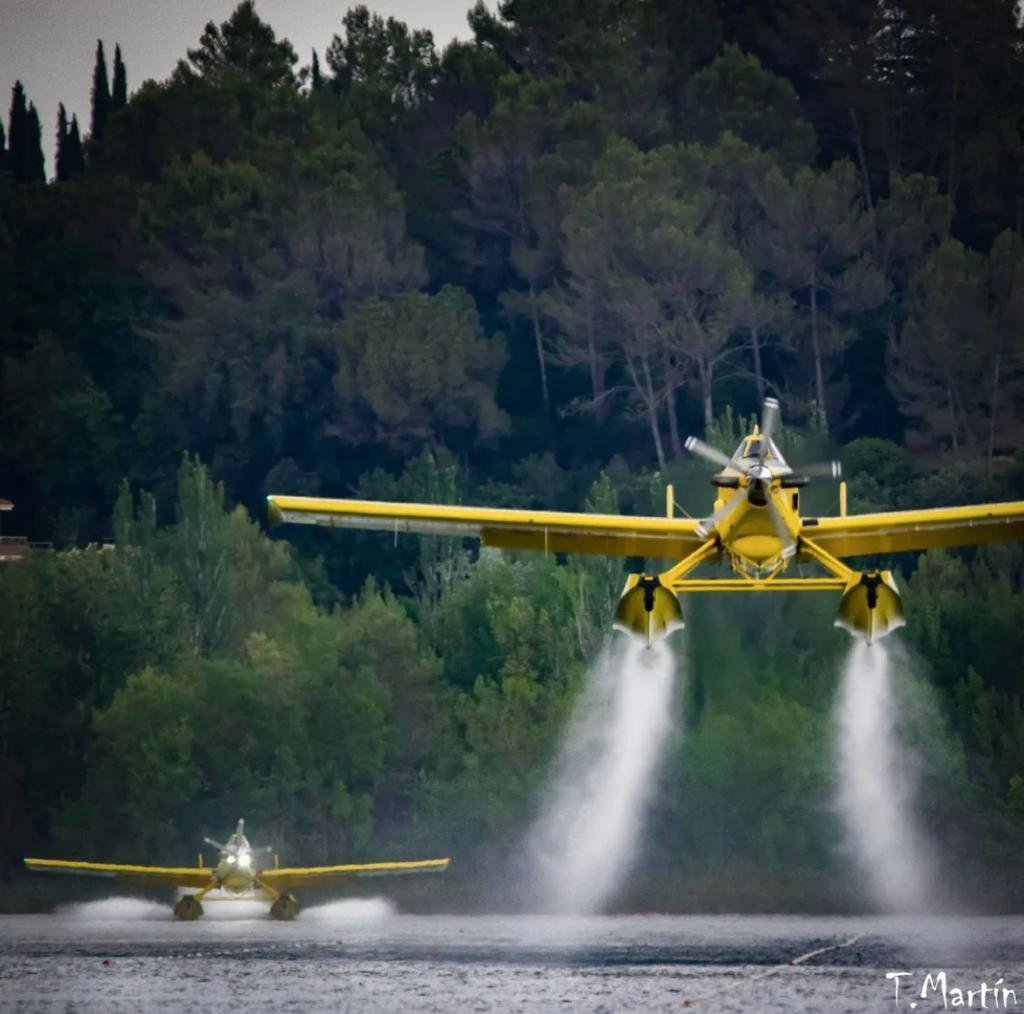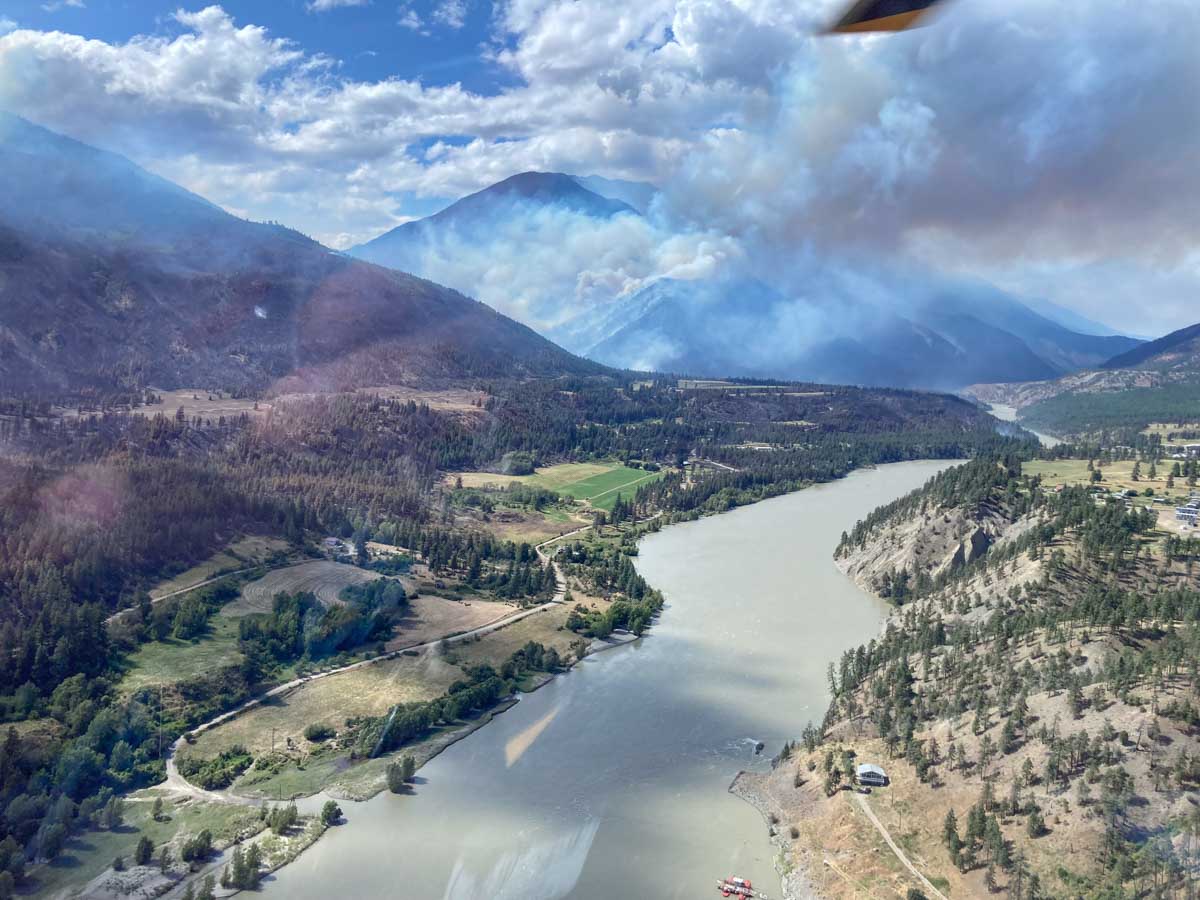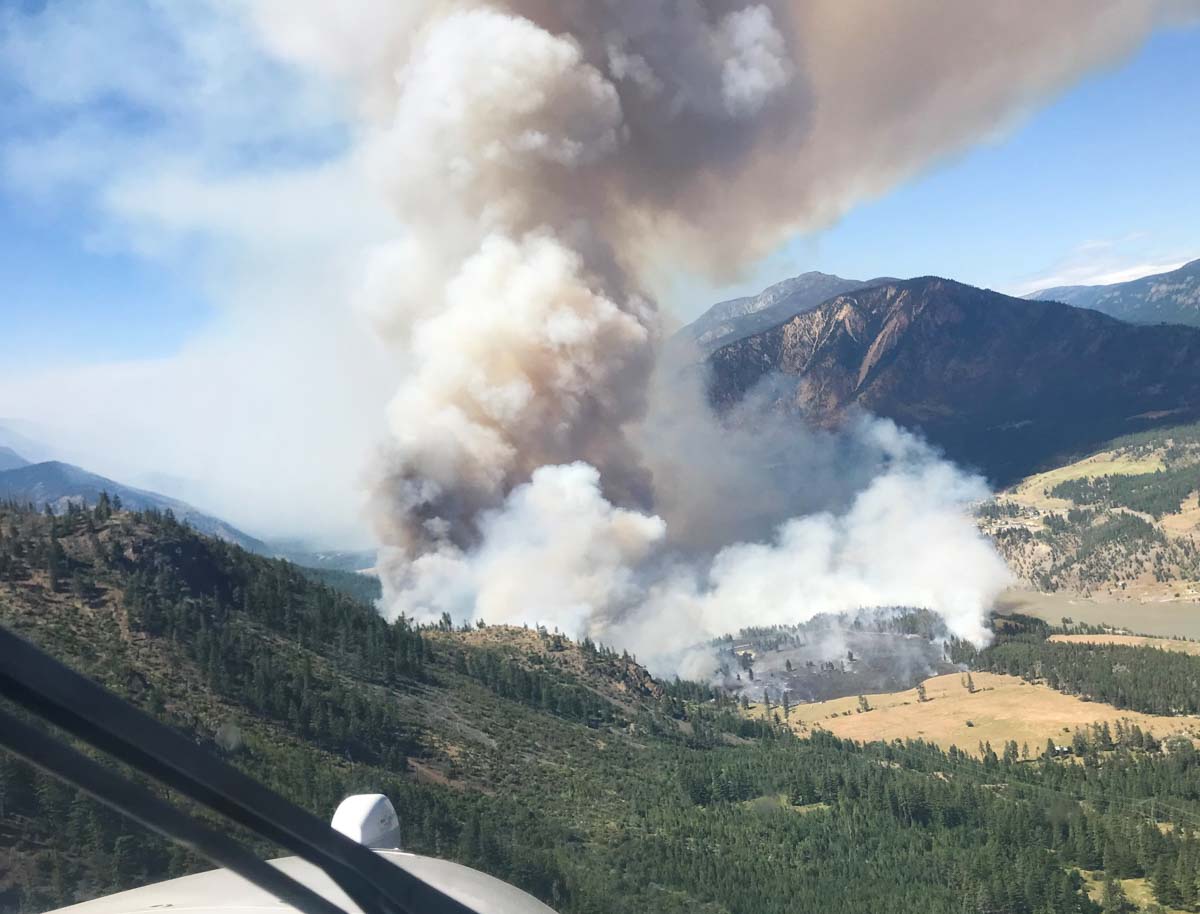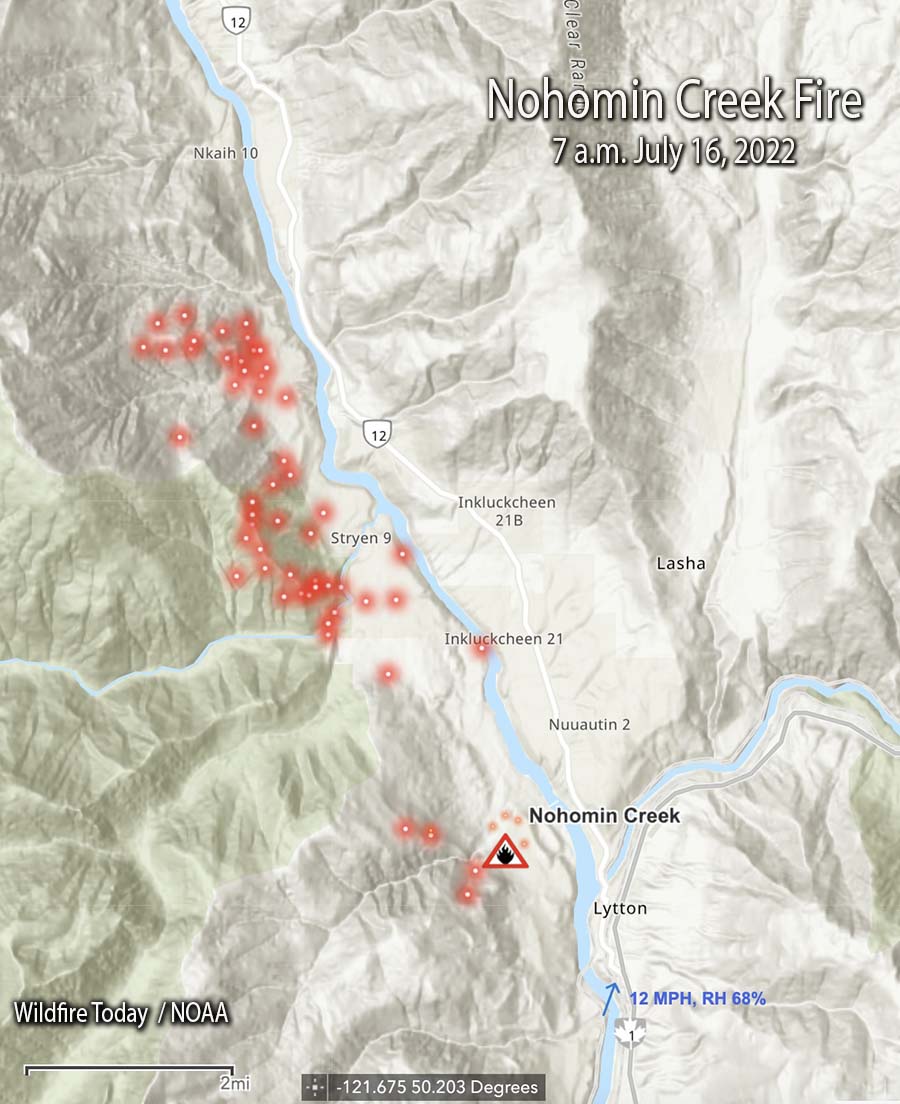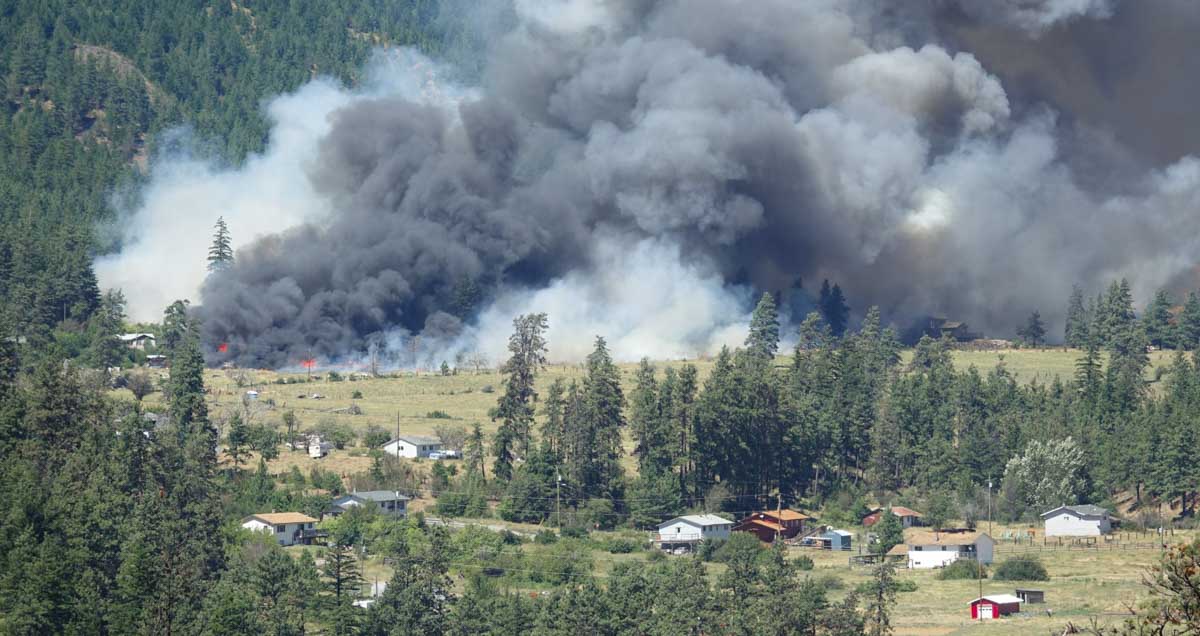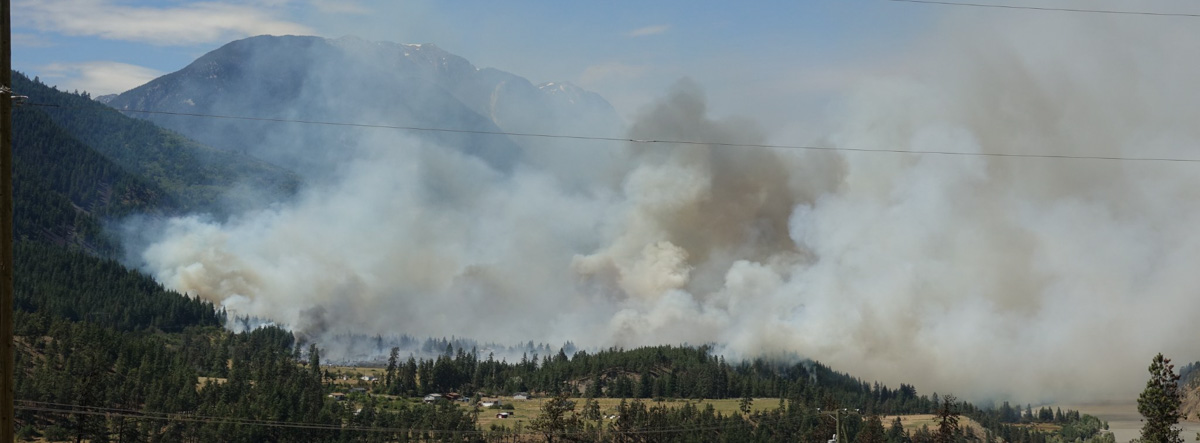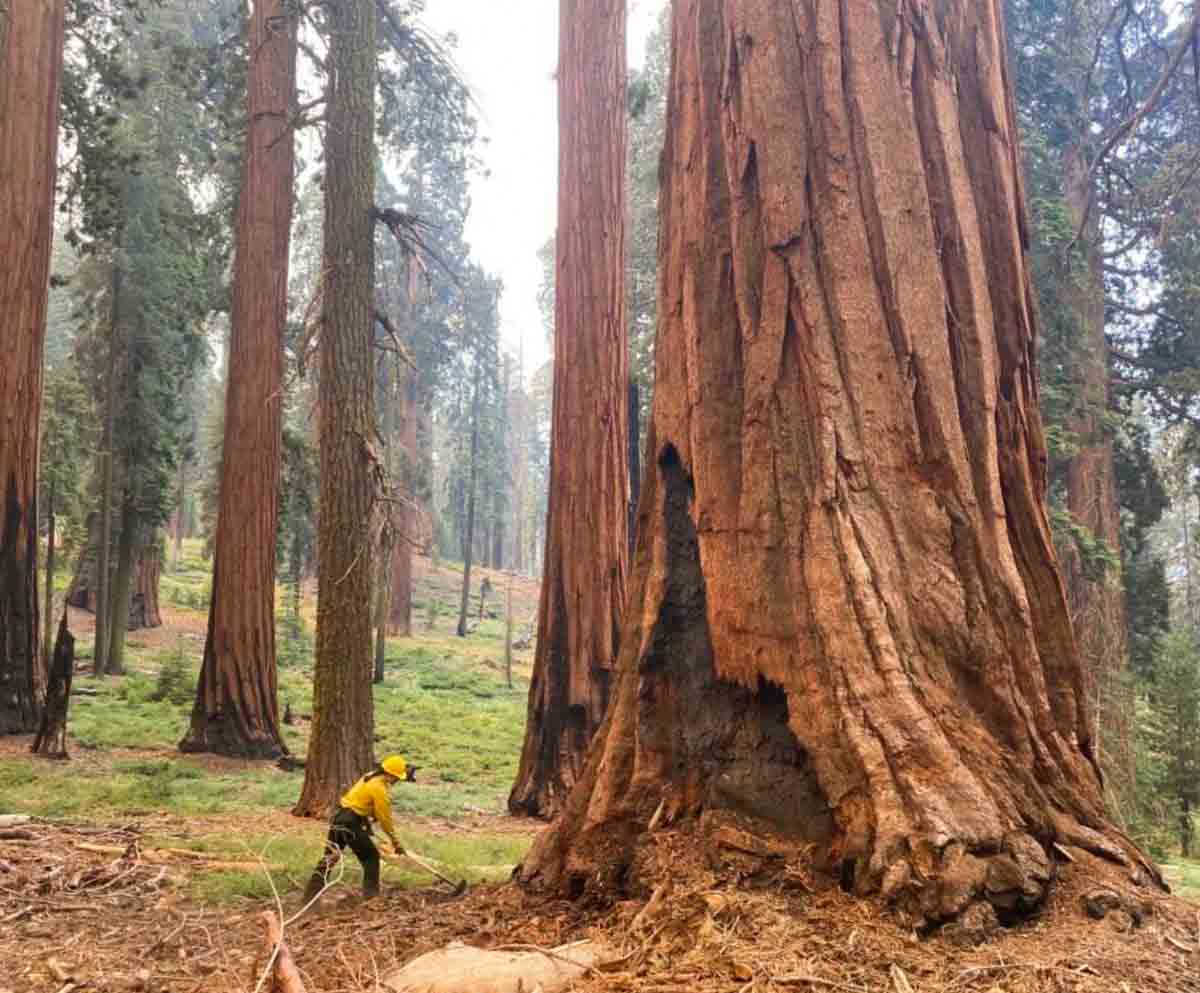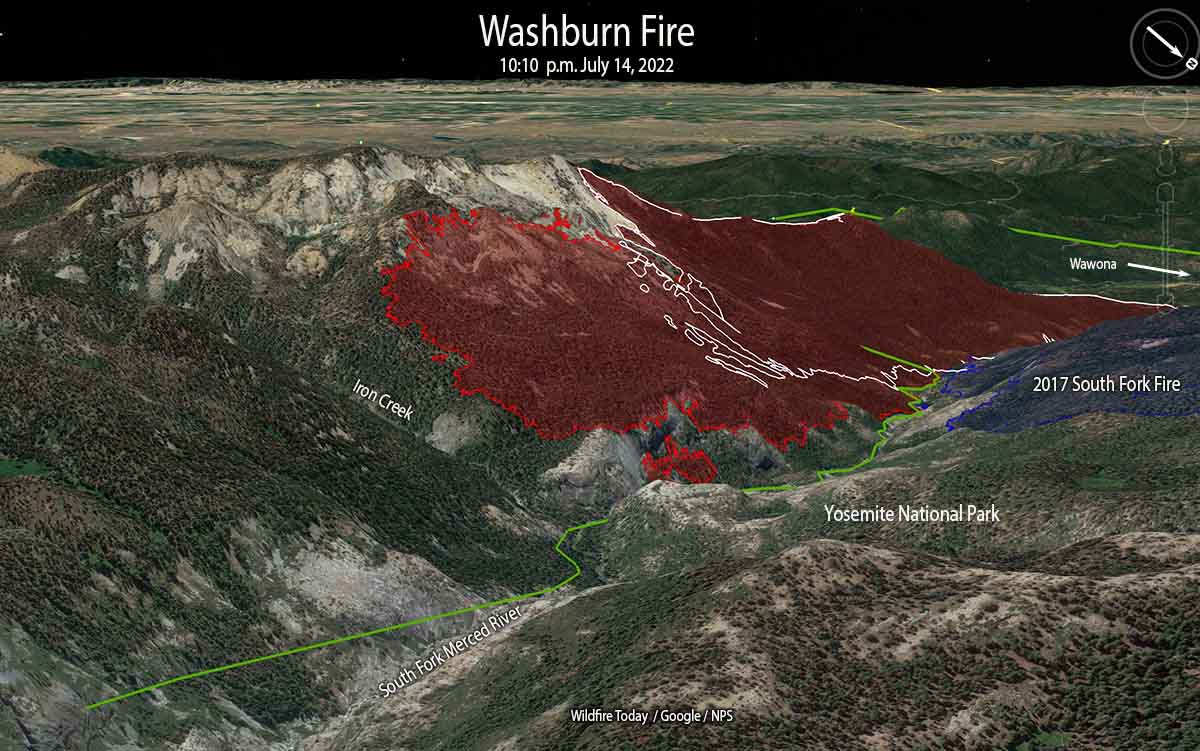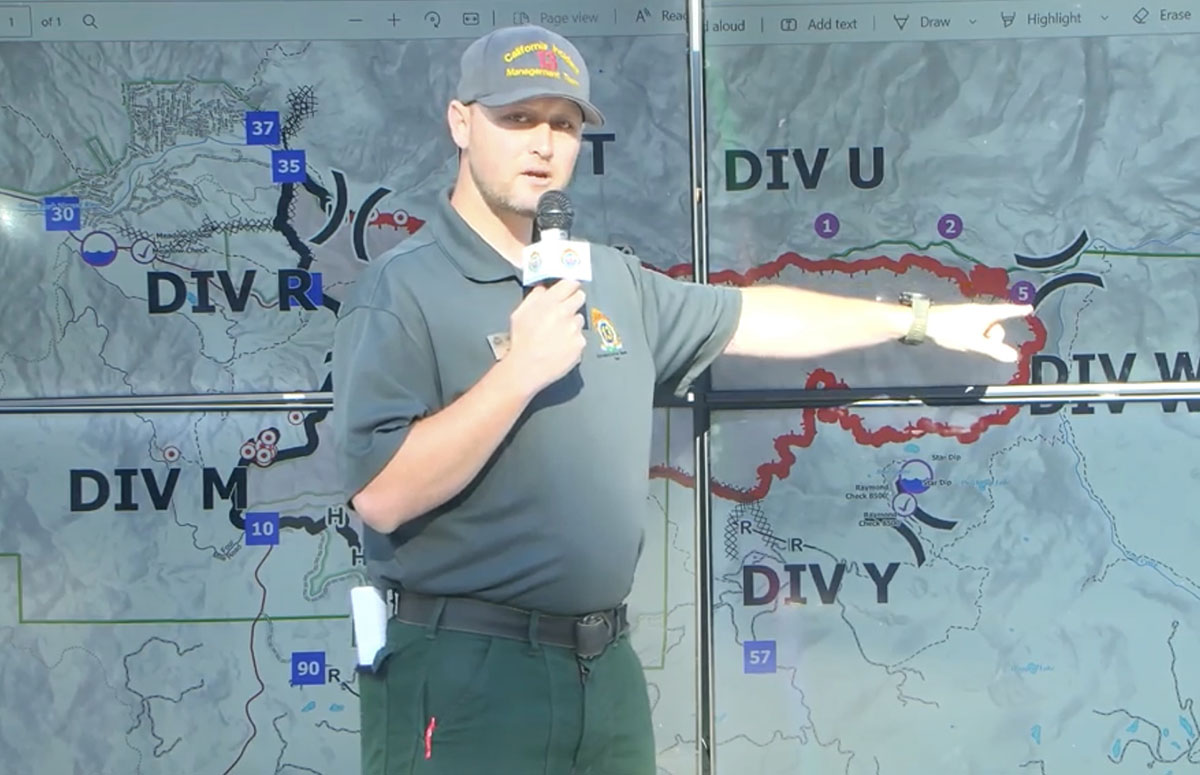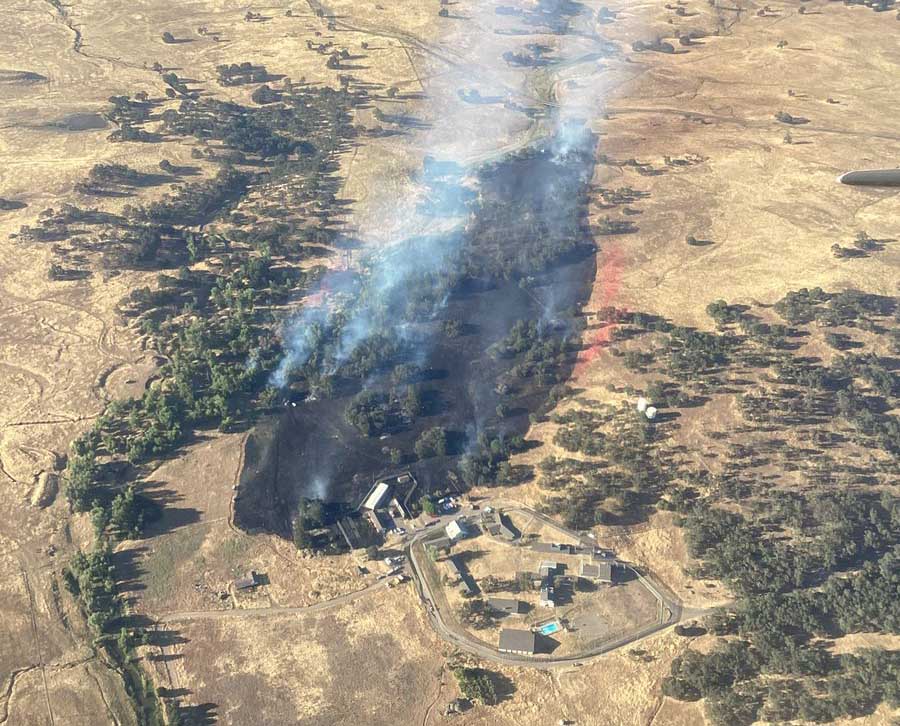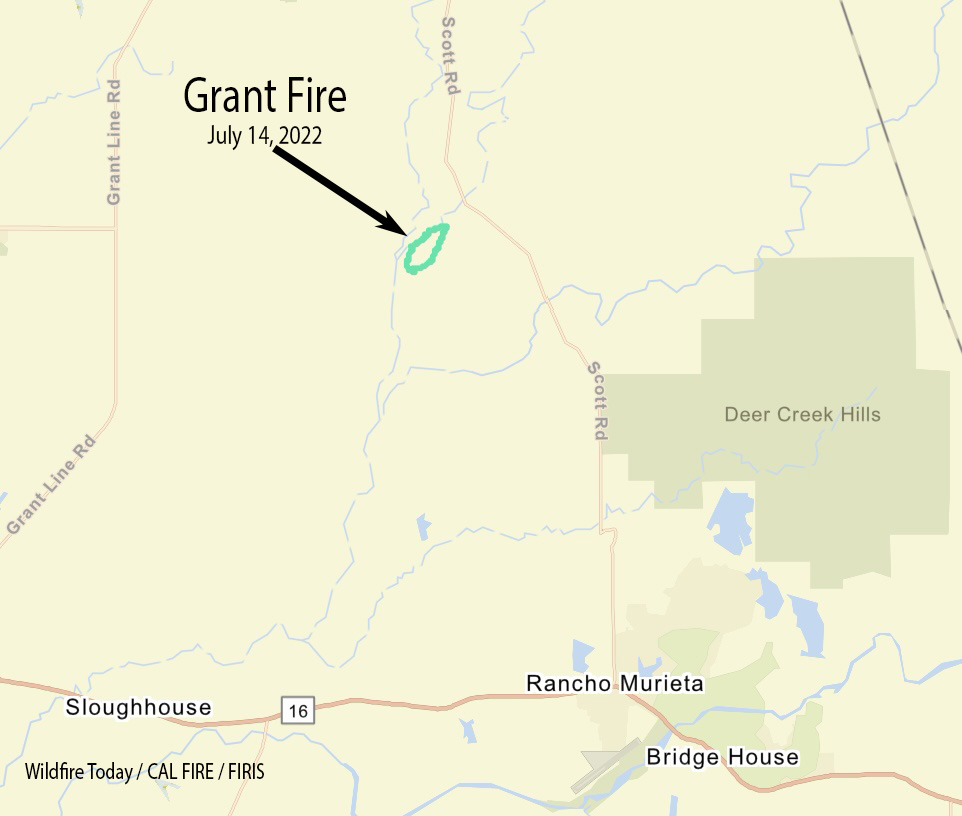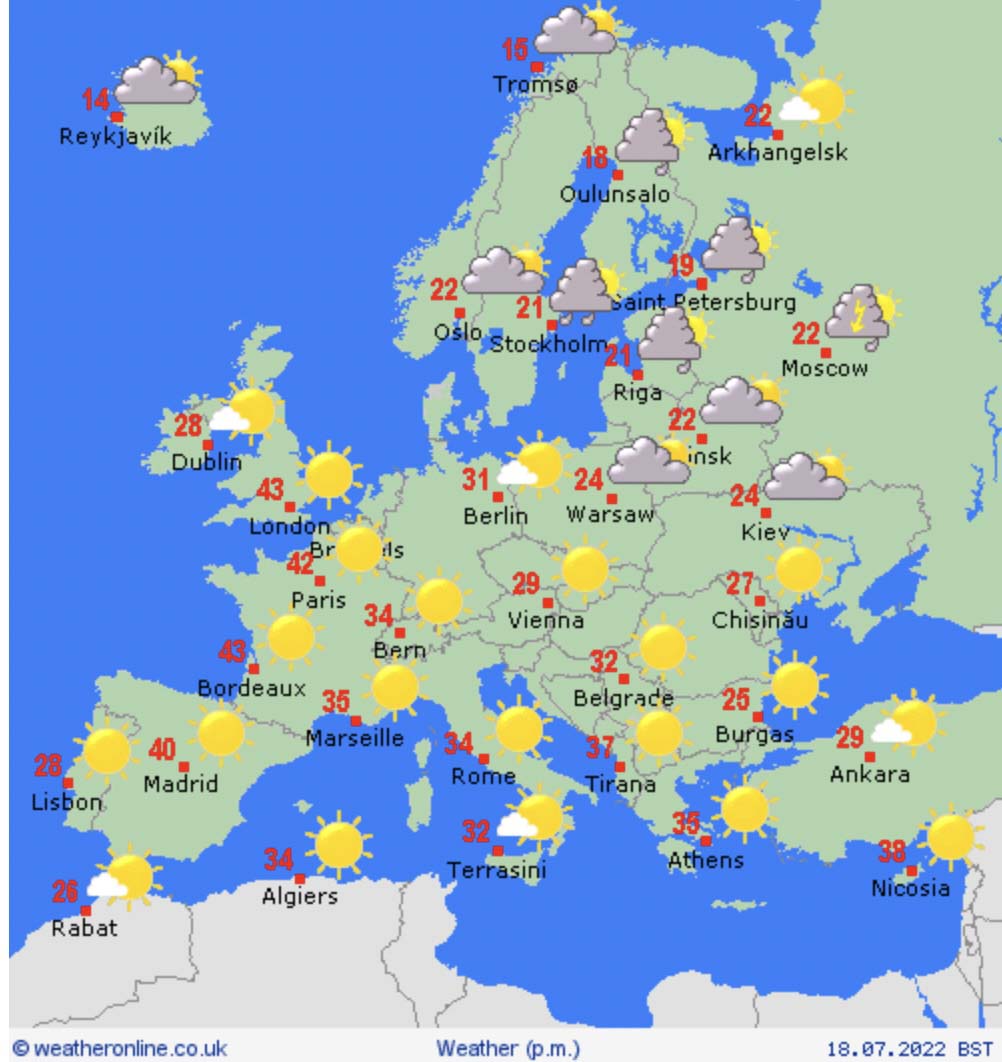
As Western Europe enters its second heat wave in the last 30 days the maximum temperatures are predicted to set records. Residents in the United Kingdom could experience conditions none of them have ever seen as the temperature rises to 104F degrees (40C) or more, prompting officials to issue the first ever red “extreme heat” warning for Monday and Tuesday.
Farther south in Europe, in southwest France on Saturday there were temperature peaks of close to 108F (42C), as the city of Biarritz broke a maximum temperature record. Nearly three-quarters of the country’s population, 45 million people, were affected by red or orange heat alerts in what is the earliest heat wave ever recorded in France.
The hot, dry weather has resulted in numerous wildfires in Britain, Spain, Portugal, and France over the last several days, bringing an earlier than usual start of the fire season. Firefighters in London, yes, London, have dealt with more than 800 vegetation fires since the start of last month to July 12.
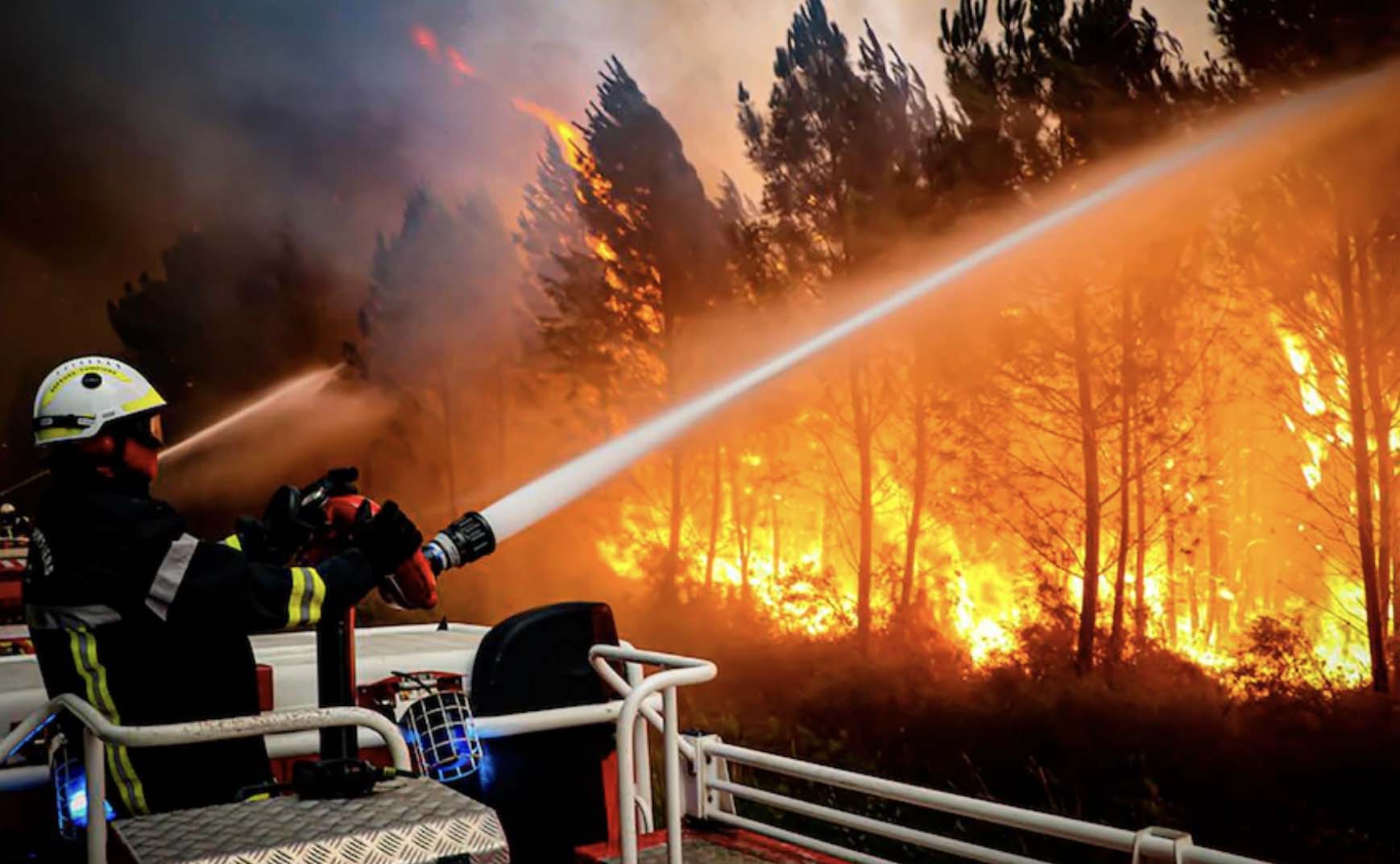
Two blazes near the coastal town of Arcachon in France’s southwest Gironde region have burned more than 24,000 acres since Tuesday. About 3,000 firefighters assisted by firefighting aircraft are battling the blazes in southern France.
On Friday a pilot was killed while working on a fire in Northeast Portugal when an Air Tractor AT-802AF Fire Boss went down near the town of Torre de Moncorvo after scooping water on the Douro river.
Spain is also working on several large fires that have burned tens of thousands of acres. In southern Andalusia, 3,000 people were evacuated after a fire started near the village of Mijas in the province of Malaga. Around 200 firefighters supported by 18 aircraft are assigned to the incident.
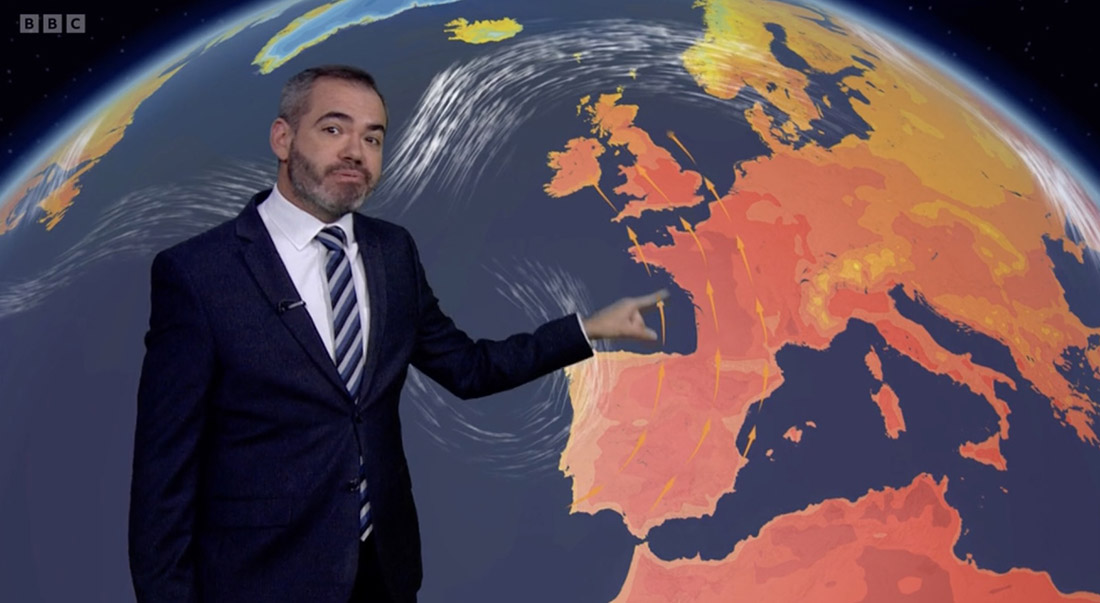
BBC weather forecaster Ben Rich explained that the current heat wave is caused by the jet stream shifting north and a portion of it breaking off to form a low pressure area west of Portugal, a cutoff low, with south winds pumping heat north into Western Europe including Spain, France and the UK.
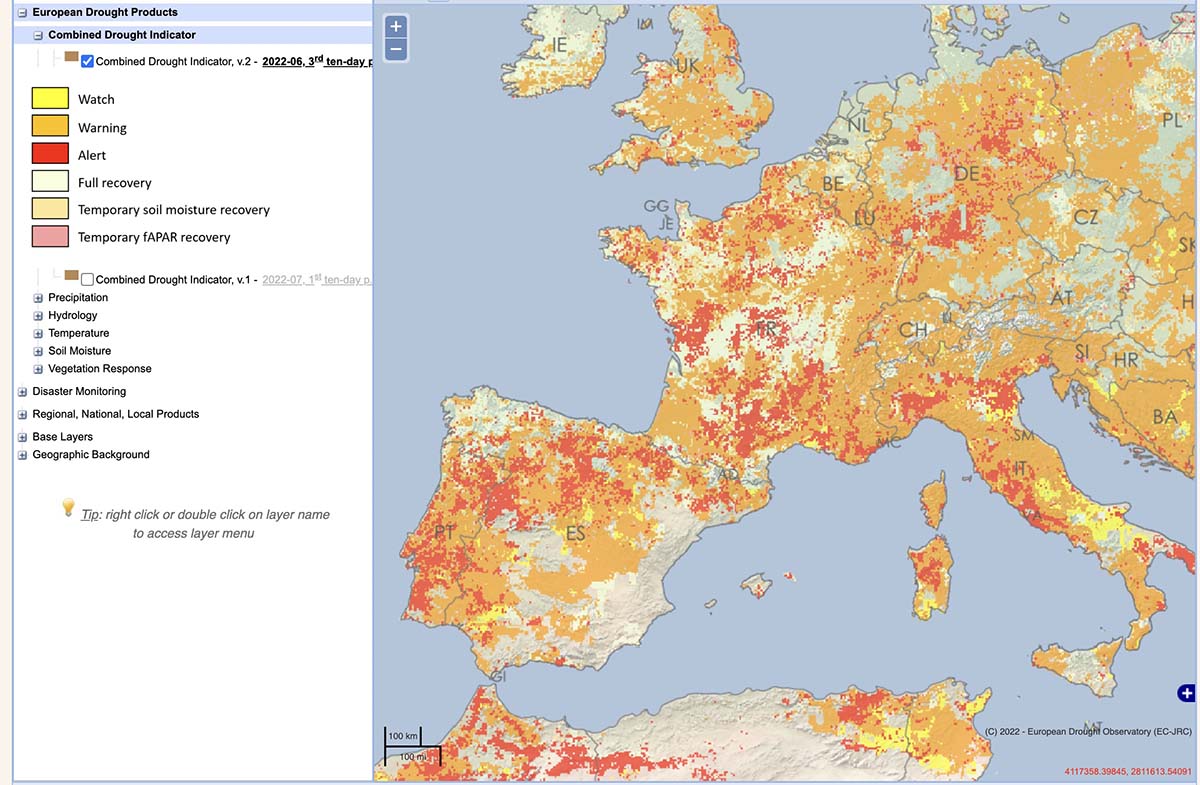
Much of Western Europe and the southern UK are in drought ranging from warning to alert levels, according to the European Commission’s Drought Observatory. The dry soils allow more surface heating and the result is record-setting temperatures and lower than average moisture in the vegetation, establishing conditions that are conducive to large wildfires with high resistance to control.
The video below is a summary of current wildfires in Western Europe.

